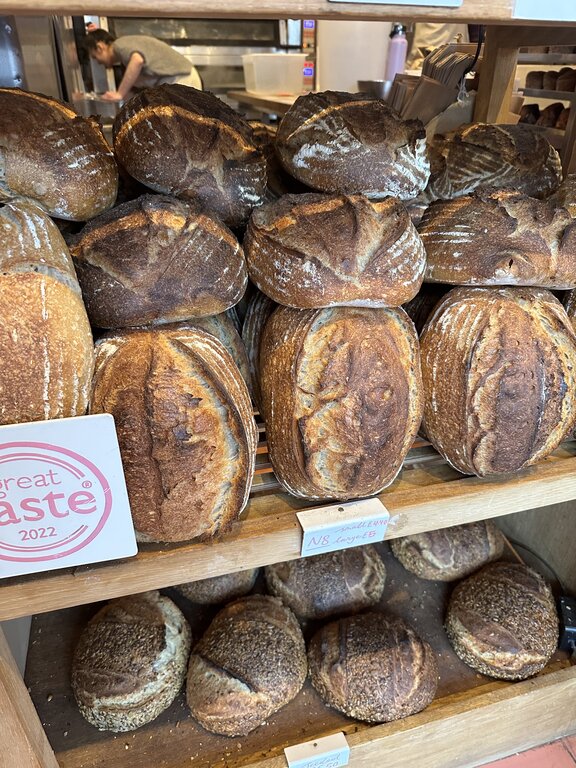Wildfarmed Flour

The ‘wildfarming’ method involves sowing seeds directly into grass, growing different plants side-by-side, bringing grazing animals onto the fields and never tilling the soil or spoiling it with chemicals and heavy machinery. Together, this method produces resilient, nutritious crops while constantly improving the soil and surrounding ecosystem.
Every loaf and every pastry that we make contains Wildfarmed flour! Check out our range here.
Healthy for us
Good soil makes great food. Almost all food plants are now grown in dead soil that has been stripped of the teeming microbiome which is so important for both soil and human health. That makes them unhealthy, requiring chemicals to survive and without any real nutritional quality. The best, healthiest food is grown from living soil, using knowledge and care for the land - not dozens of E-numbers, emulsifiers and preservatives found in so many processed supermarket loaves.
Mass-produced flour uses steel roller milling that scrapes the outer bran layer off the grain and discards the flavourful, nutrient-rich germ. All the flours we use are stone milled, and stone milling is different. It grinds all parts of the grain together into a fragrant, golden flour loaded with protein, vitamins, fibre, antioxidants and healthy fats. Much like freshly ground coffee makes a superior cup, freshly milled flour makes for exceptional baked goods

Healthy for the planet
We’ve come to know that food doesn’t pay its bills. Corporate interests put what they call ‘cost efficiency’ above nutrition, taste and sustainability. But low supermarket prices are an illusion based on farm and oil industry subsidies. When you add up the long-term health, environmental and social costs of modern farming, there’s nothing cheap about it.
Low-intervention farming can have a big impact. By rejecting chemicals and heavy machinery in favour of simple and restorative farming practices that work with nature, we can bring back fertile soil so it can store and filter water, prevent flooding and capture vast amounts of CO2.

